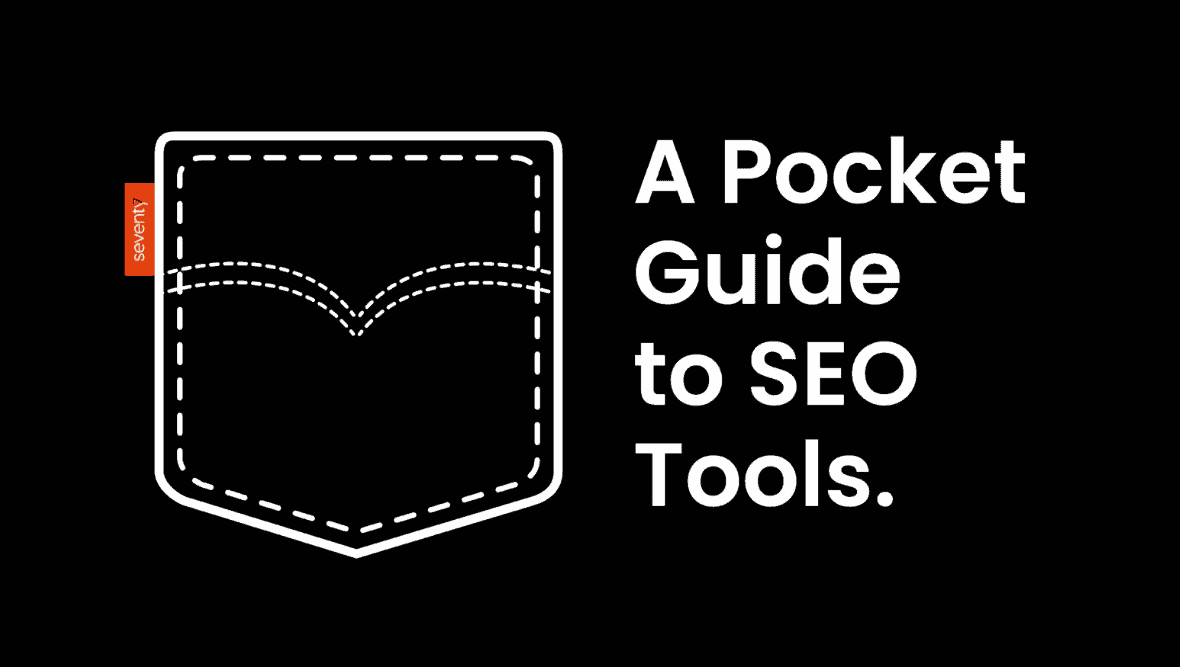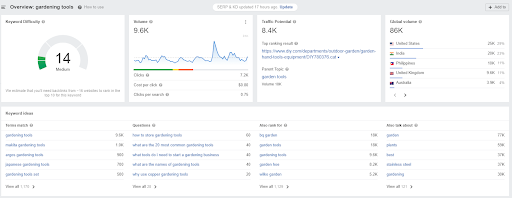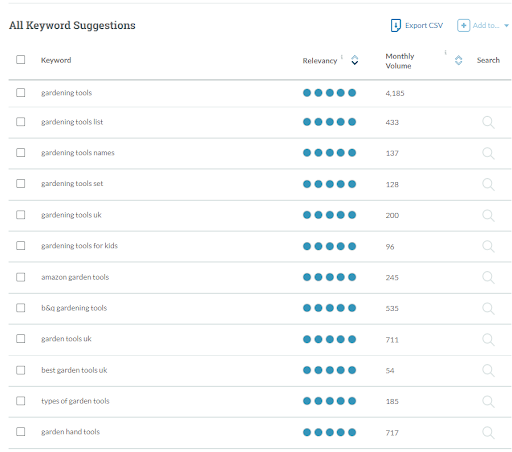
If you want to stay well ahead of your competition, using SEO tools as part of your digital marketing has never been so important. Staying top of the right search result can mean the difference between you or a rival brand being noticed.
A good SEO tool could be that difference - between your brand’s site ranking at the top of Google, or being completely lost in the pages. More often than not, it comes down to good keyword research, among a load of other factors. (If you want someone to help demystify those other factors, give us a shout)
With a wide variety to choose from, we’ve picked out the three biggest SEO tools to compare how they might help you and your business. It’s always worth remembering that many SEO tools have free trials, which means you can choose which works best with your workload, and your brand.
The tools we’ve picked out to feature are Ahrefs, SEMRush and Moz. All three sites generally help you achieve the same thing:
- Give you information on the phrases people use when searching for businesses or brands in your industry.
- Identify ways for you to build links between your sites and others.
- Show you opportunities for creating new content that will make people come to your site.
- Pick out aspects of your site that can be fixed to speed up load times and help Google push your site up its rankings, these are known as Technical SEO improvements.
One tool that all three sites do is show you popular keywords that people are searching for within your brand’s niche, as well as how easy or difficult it is to rank for those keywords.
Not sure which keywords will work for your brand? Here’s a simple way to find out:
- Create a really in-depth list of topics and subtopics that you know your audience searches for or talks about online, ideally they’ll be searchable phrases.
- Use the keywords you’ve picked out in an SEO tool to find out how many people search for them, and how easy it is to rank for them on Google! These tools will sometimes suggest keywords you haven’t thought of which end up being really useful for your brand’s ranking!
- Separate those into priority order to avoid keyword stuffing. Choose a primary keyword, then up to six secondary keywords to use through a piece of content, depending on the length (don’t try and fit seven keywords into a product description!).
Usability
In terms of making your way through the three sites, they all have unique user interfaces to navigate. SEMRush and Ahrefs are a bit simpler and show fairly similar data, while Moz is fairly tricky to click through, especially for complete beginners.
An important note is the stark differences each site gives in terms of keyword difficulty. This is a score an SEO tool will give to show how easily you can get to the top of Google’s search results, a term known as ‘ranking’.
Ahrefs and SEMRush will both give you excerpts of advice on how you can rank, either through backlinking or a unique piece of content, the latter which we’ll come to later…
SEMRush has one search bar for everything you need, making it easy to find the data you’re looking for with keywords, site data or specific URLs. Simply type or paste what you need into it to get the results you’re looking for:

Ahrefs has a variety of tabs that are all super useful. But when you type in specific keywords, you’ll get the exact data you’re looking for almost instantly.

With Moz, you’ll have to do slightly more digging around to find the exact tool you’re looking for. In terms of interface, this makes it slightly more difficult to use than Ahrefs and SEMRush.
However with the Moz keyword research tool you do get a much simplified idea of the data, as well as suggestions for keywords you could look to target for your brand.

Site Data
Moz, Ahrefs and SEMRush are all really good for basic domain analysis, whether on your own website or on a competitor’s site. This is also ideal for finding keyword gap opportunities, meaning you can then try and rank against a competing brand!
All three sites will give you really useful metrics. The main one being an indication of how well your website is likely to perform in search results - SEMRush calls it an ‘authority score’, for Moz, it’s ‘domain authority’, while Ahrefs defines it as a ‘domain rating’. All of these are ranked from 0-100, with a higher score being the best.

SEMRush also shows you how well a PPC or Paid campaign might be doing thanks to the Paid Search Traffic tab.

With Ahrefs, you can also see the traffic value of a page, showing how much money your organic or paid keywords are making you online.

This is where Moz falls down a little, as you get a lot less site-specific data when searching on here. It’s possible to get more data through Moz, but only if you can link a Google Analytics account for the domain you’re searching. This makes the whole process a bit trickier if you don’t have that kind of access….
Content
Once you’ve analysed site and keyword data, it’s time to try and create content that works for your brand, and is relevant to your audience.
All three sites have various ways of showing you popular keywords similar to your key brand search terms, and even suggest which questions you should answer if you’re looking to rank for that keyword.
What’s important to note is that if your domain rating, domain authority or authority score isn’t very high, this makes it much trickier to rank for those keywords through content. So try and focus on improving your link building first wherever possible.

Ahrefs’ Keyword Ideas tab shows you a variety of suggestions, from matching terms to other keywords your search term ranks for. Clicking through these tabs will show you how easy it is to rank for each keyword.

SEMRush goes a little deeper with its keyword data, it recently launched a new tool within its tool that shows your potential audience’s search intent.
This is visualised through letters next to the keyword, and can help you inform the content you’re looking to create:
I - INFORMATIONAL INTENT - These searchers are looking for answers to a specific question (how to care for garden tools)
C - COMMERCIAL INTENT - People looking to compare brands or investigate services and products (must have garden tools)
T - TRANSACTIONAL INTENT - These searchers are looking to buy something online (buy garden tools online)
N - NAVIGATIONAL INTENT - Searchers looking to find a specific site (B&Q Gardening tools).

Moz’s free tool keeps things simple when visualising keyword data. You can change the columns on the right to find keywords with higher data, or sort them by relevancy as per the example above. The higher the relevancy, the higher the score out of 5!
While this is a simplified way of looking at SEO Tools, the world of digital marketing can be really complicated. If you’re looking for a solution for your brand online, get in touch today and we’ll start a conversation.
Want more content from seventy7? Read our Pocket Guide To Digital Marketing Jargon here.


